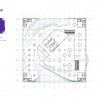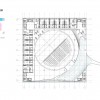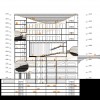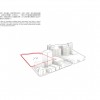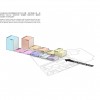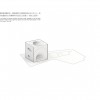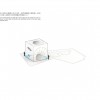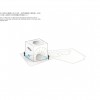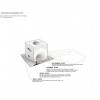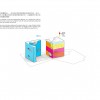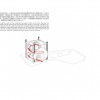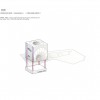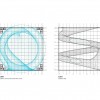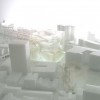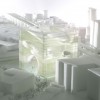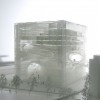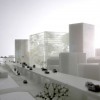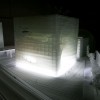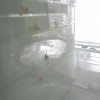Public Space That Doesn't Suck: Bjarke Ingels Group's (BIG) TEK Center
The Bjarke Ingels Group (BIG), a firm based in Denmark, Copenhagen, was founded by namesake Bjarke Ingels in 2006 and has been on the architectural community's radar ever since. BIG's work is known for being simultaneously playful and socially conscientious. Though many of their projects are situated on dense urban sites, BIG often carves outdoor spaces within the vertical confines of buildings. Their Technology, Entertainment and Knowledge (TEK) Center in Taipei, Taiwan continues this trend. Other notable BIG projects include the Danish Pavilion for the Shanghai Expo 2010 and innovative housing projects such as 8Tallet and The Mountain Dwellings, which feature topographically inspired sections that incorporate terraced roof gardens with sweeping views.
 Credit: BIG
Credit: BIG
"High-tech" is a phrase that comes to mind when viewing BIG's animated videos and intricate 3D computer renderings of their designs, but, in some cases, technology provides the premise for the program. BIG recently designed what might be the world's first multimedia center, the 53,000 m2 (approxiamately 570,487 sq. ft.) Technology, Entertainment and Knowledge (TEK) Building in Taipei, Taiwan. The TEK Building, which was designed as part of a competition, is intended as a site for TEDxTaipei -- an annual, independent event inspired by the original Technology, Entertainment and Design (TED) conference. For the remainder of the year, the TEK Building will provide exhibition, conference, and showroom space for other media events and draw the public to visit its restaurants, retail stores, and hotel.
The mixed-use public building will contain an entire pedestrian street's worth of programming, which has been consolidated, stacked, and coiled to fit within the constraints of a perfect cube measuring 57 x 57 x 57 meters (approximately 187 x 187 x 187 ft.) . The parti is simple and straightforward but sophisticated in articulation. In plan, a circle is hollowed from the center of the cube, and in section this courtyard spirals up toward the sky and punctures the facade in multiple locations, with only minimal planes of glass to serve as railings. The most fascinating feature of the design is that it is possible to enter the building from street level and climb all the way to the roof without actually going inside. This "vertical plaza" will be open for public access 24/7, so hypothetically anyone can walk up from the street at any time.
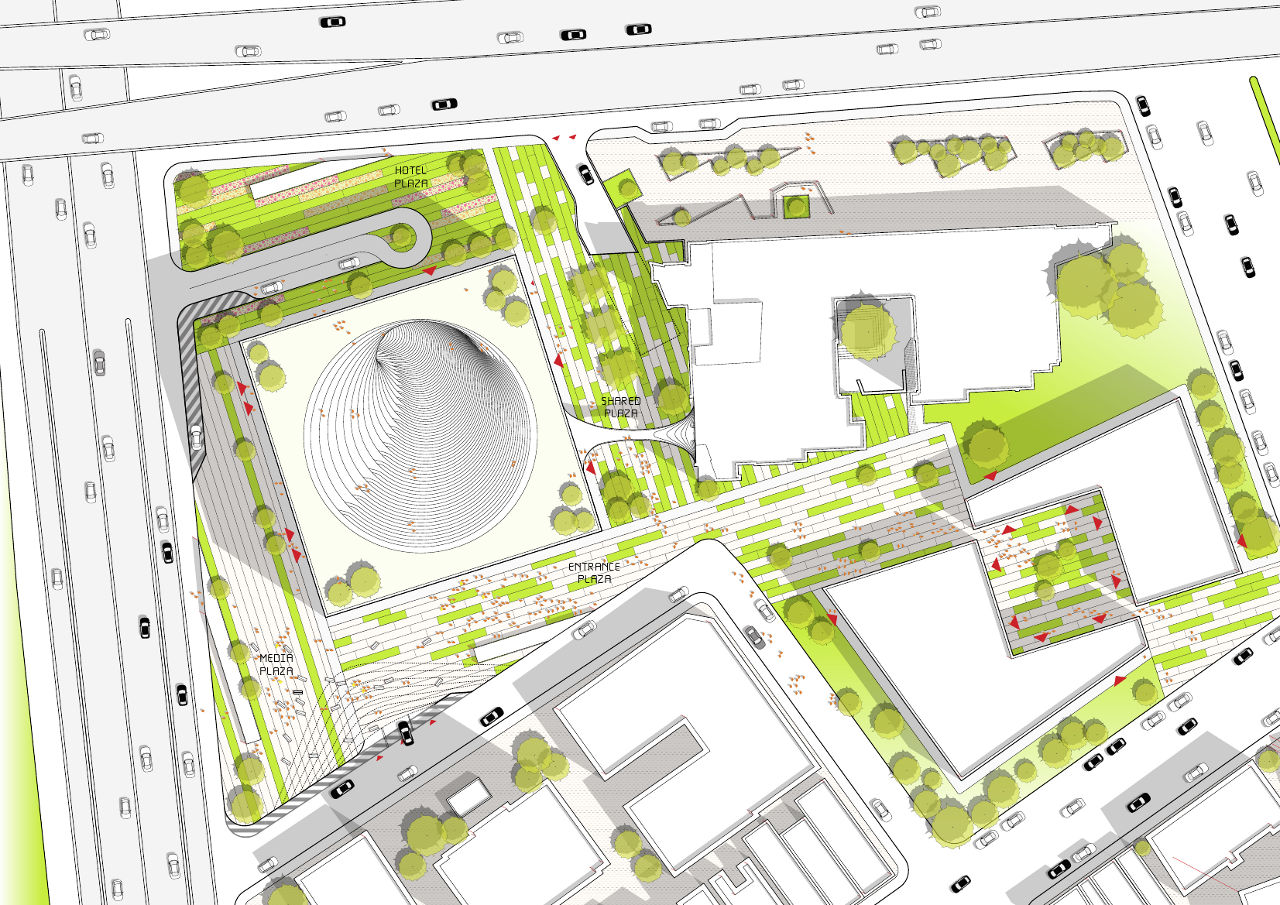
Visitors who make the climb all the way to the top of the TEK Building will be rewarded with city views from its roof, which is planted with small trees around the perimeter of its funnel-like form and which will serve as a public amphitheater. Associate Partner Kai-Uwe Bergmann refers to it as the "public suck" because the roof appears to be the victim of a force stronger than gravity. However, the shape serves a higher purpose than aesthetics; the spiraling central space will function as an air-intake and ventilation system for the building, utilizing the chimney effect. The architects worked closely with Arup's engineers to size and articulate the spiral to maximize air flow.
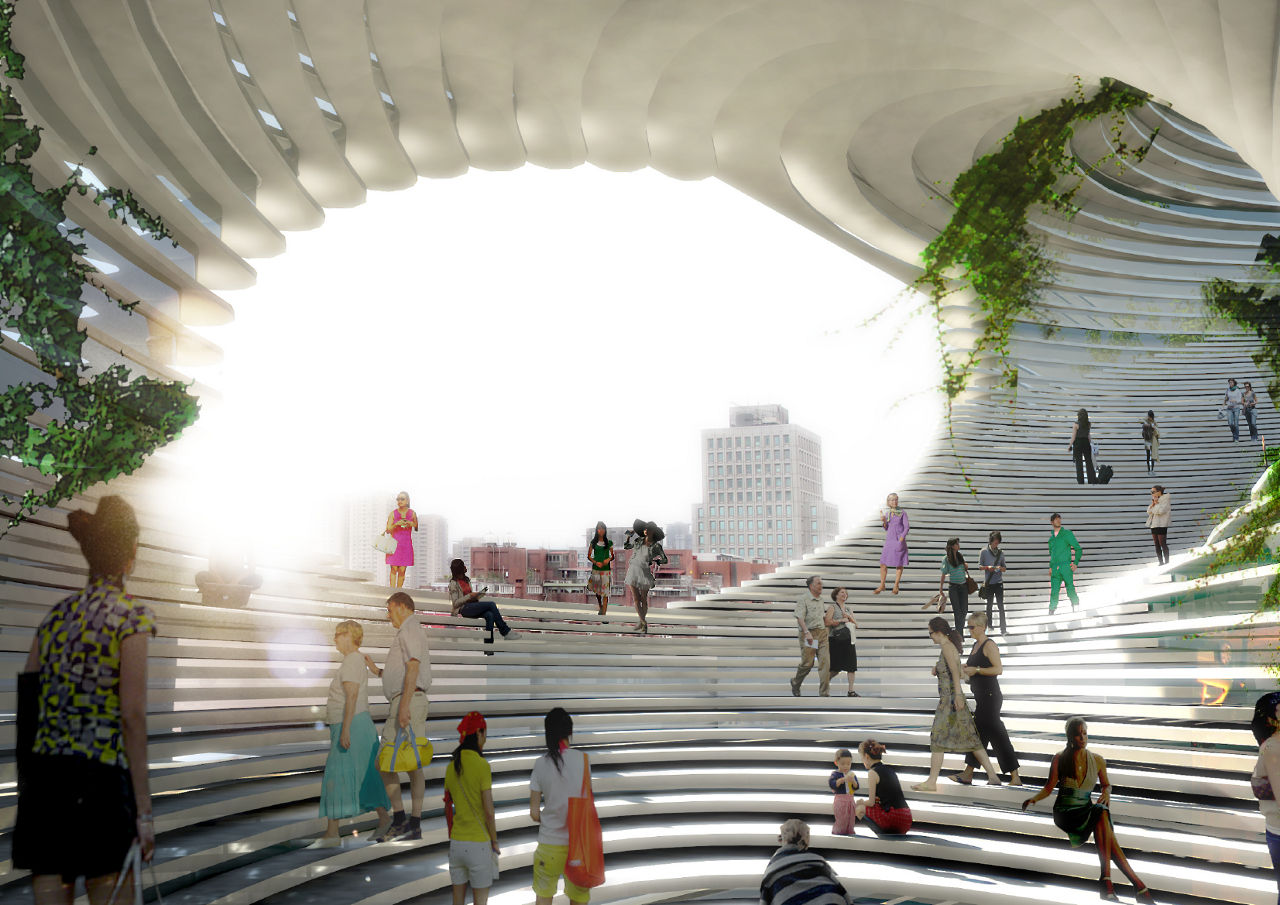

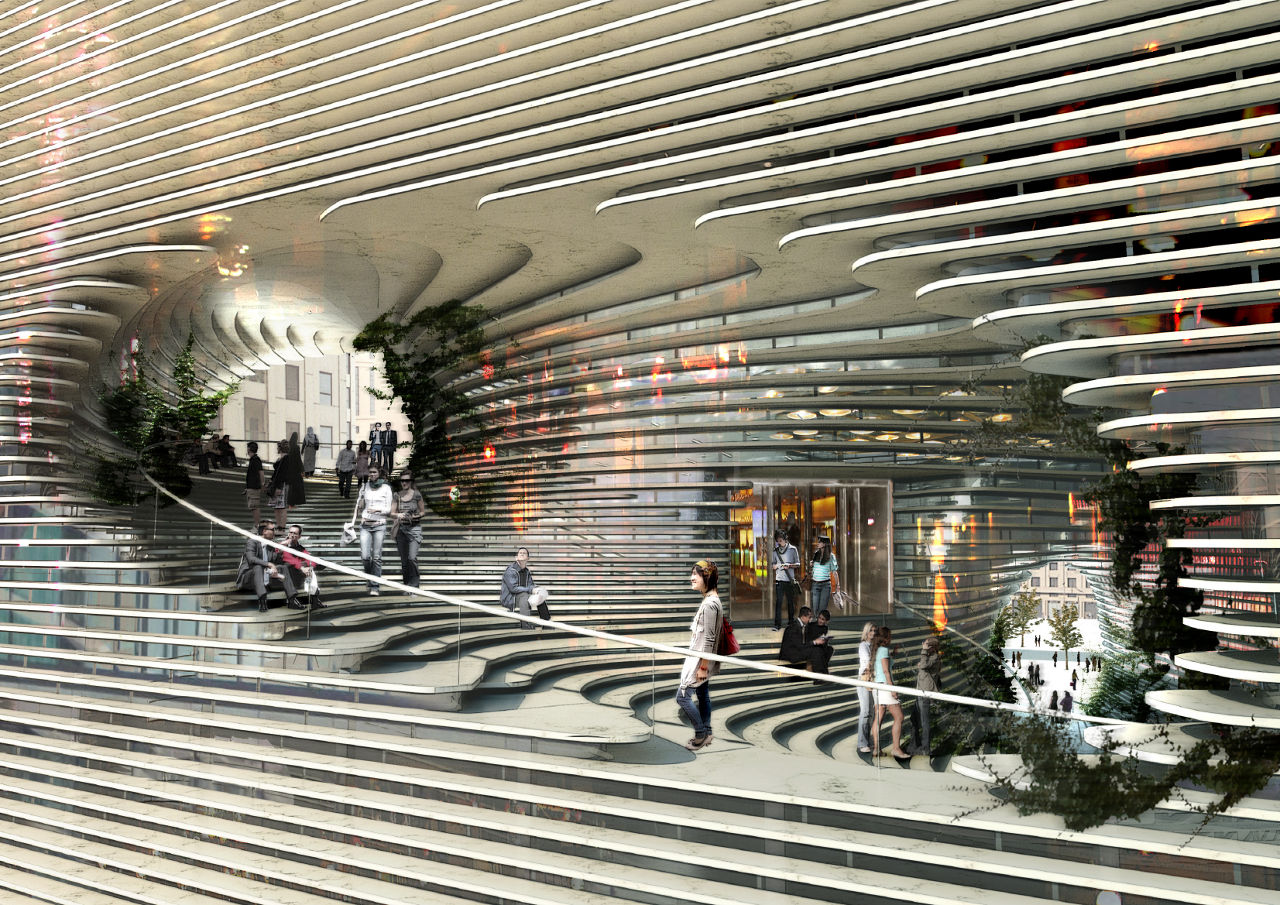


The building's energy efficiency will also be boosted by its green roof, and the designers made use of the ground as a thermal mass, which will assist with heating and cooling. The goal, according to Bergmann, was to achieve sustainability in a passive way. By keeping building systems simple, the owners pay less upfront but also save in the long term on maintenance costs. In keeping with the passive design philosophy, the ephemeral exterior design of the TEK Building is comprised of glass and concrete lamellas, which will provide shading from the sun for interior spaces. These fins also wrap inward to form the steps of the public staircase. From certain angles, the building will appear solid, and from others, each delicate layer will be apparent as in a slice of baklava.
Formally, the building might also draw some comparisons to a subwoofer, but at night its exterior appearance will be transformed by LED lighting. BIG collaborated with realities:United, a consultant from Berlin who specializes in designing multimedia facades around the world, to create the "low-tech but high-impact facade," according to Bergmann. A series of LEDs, connected to a central server, will be positioned on the underside of the fins so their light will reflect against these surfaces. The facade will display video content, such as promotions for upcoming events at the TEK Building. In more ways than one, the TEK Building provides a view into the future.

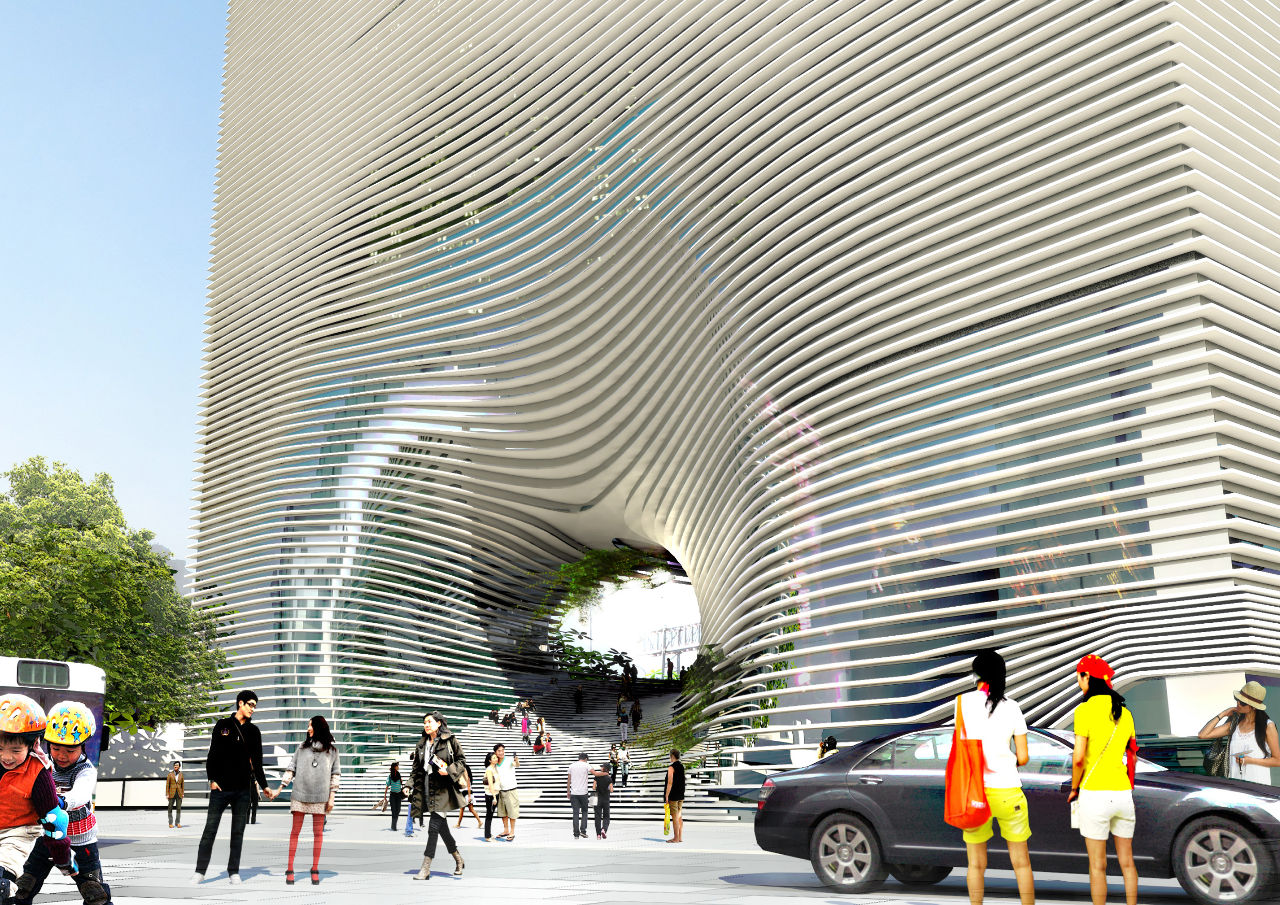
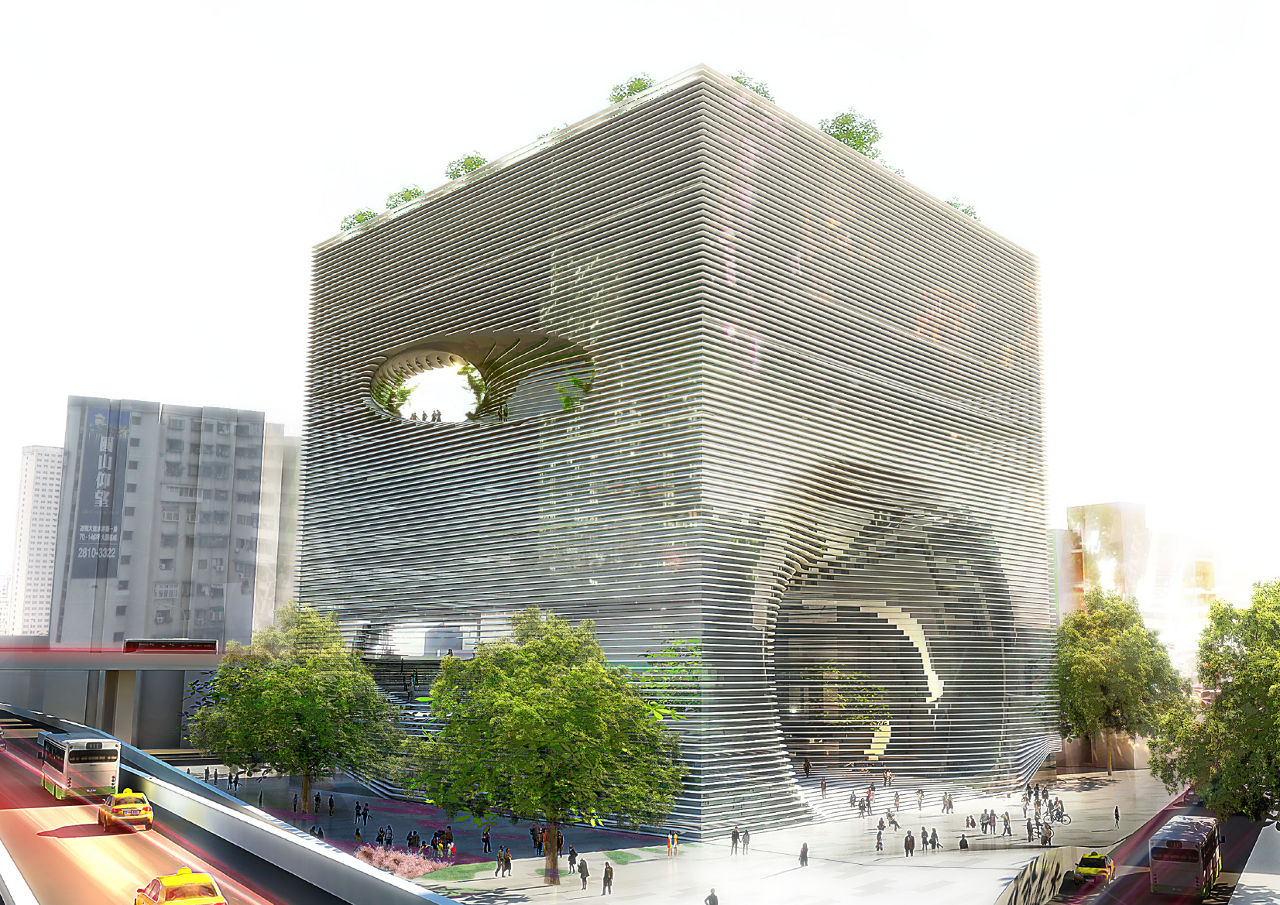
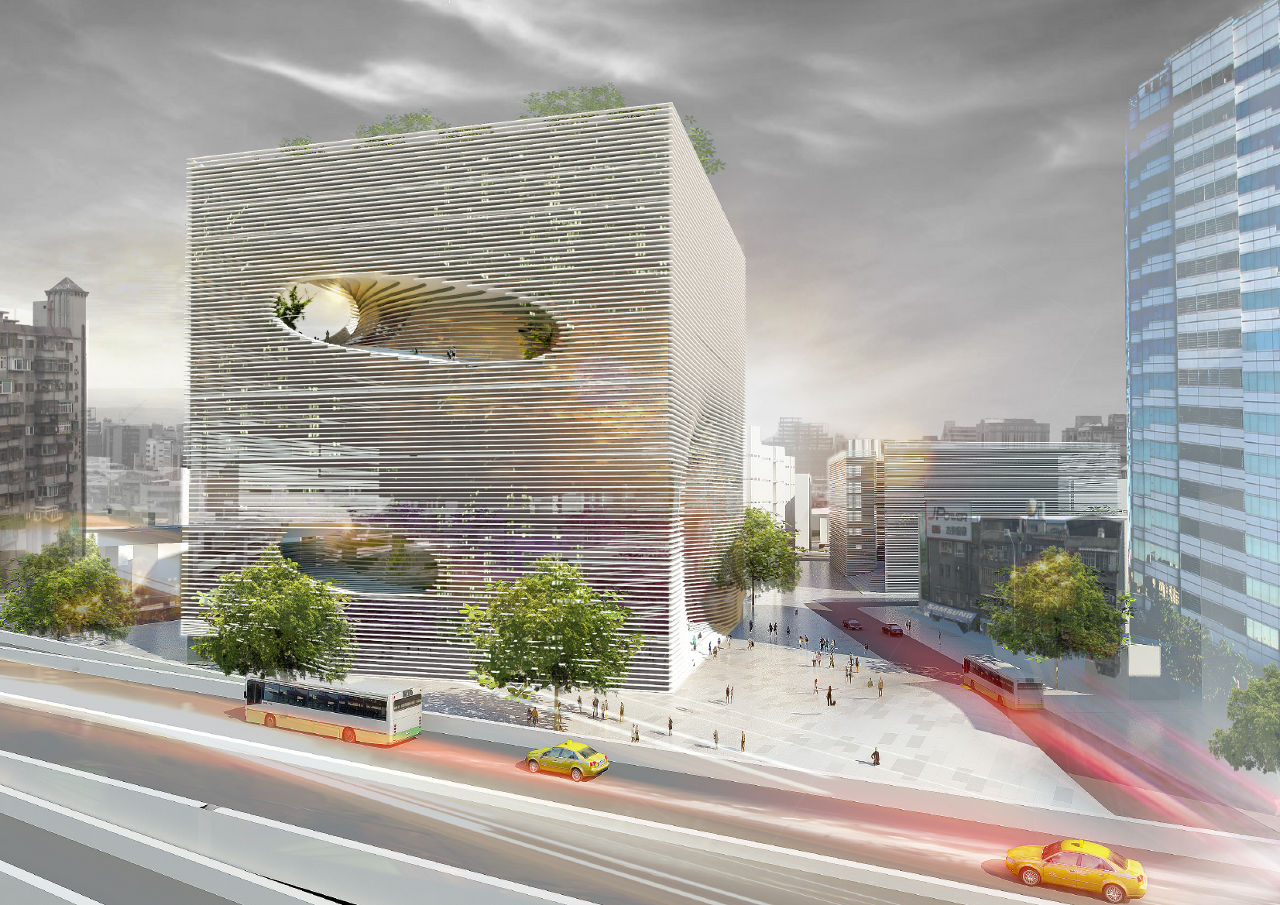
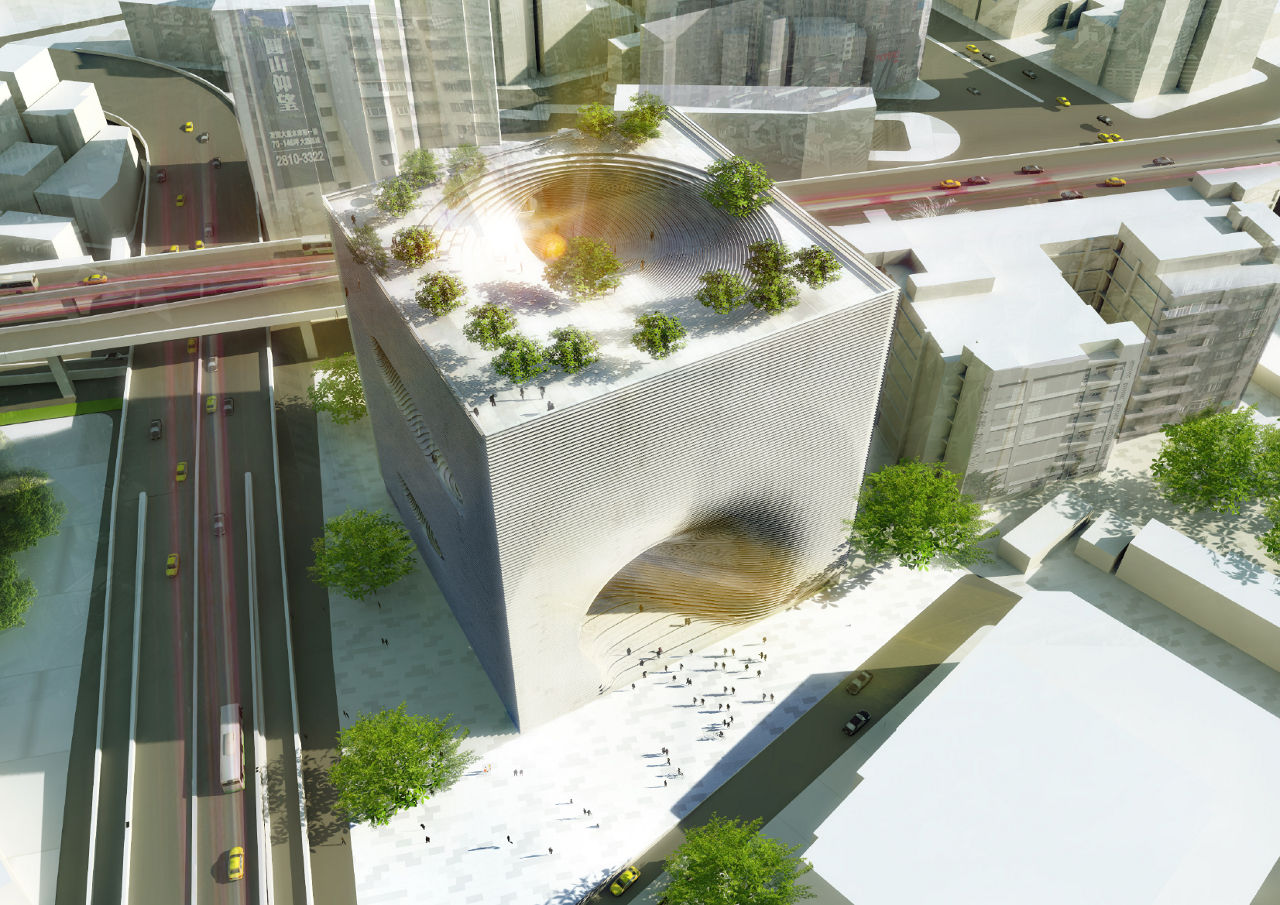


Murrye Bernard
Murrye is a freelance writer based in New York City. She holds a Bachelor's degree in Architecture from the University of Arkansas and is a LEED-accredited professional. Her work has been published in Architectural Record, Eco-Structure, and Architectural Lighting, among others. She also serves as a contributing editor for the American Institute of Architects' New York Chapter publication, eOculus.
Website: www.murrye.com

